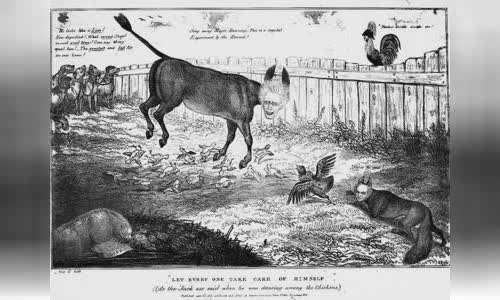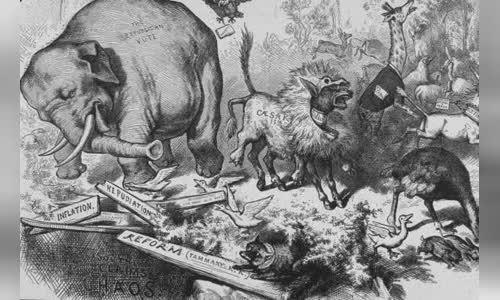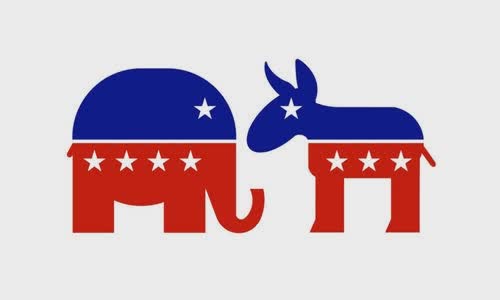The story of elephants and donkeys that became symbols of the Republicans and Democrats began 192 years ago, during the campaign of Andrew Jackson.
The late US President Andrew Jackson was an aggressive populist Democrat, whose campaign slogan in 1828 was "Let the people take power".

Caricatures Let Everyone Take Care of 1833 Photo: Anthony Imbert.
At that time, his opponents Republicans called Jackson by the nickname "jackass", which both means foolish and means donkey.
Several years later, the donkey image is still used to refer to Jackson, as shown in the 1833 cartoon "Let Everyone Take Care" by Anthony Imbert.
In the picture, Jackson is depicted as a chaotic donkey that crashes into a flock of chicks, representing the US financial system.

Caricatures of Panic Panic in third term of 1874 Photo: Thomas Nast.
The one who made the donkey emblem of the Democratic Party, and the elephant representing the Republican party, so popular is the German-born artist Thomas Nast, a Republican.
The picture shows a donkey in the form of a lion, frightening animals around, while the large elephant representing the Republican vote stands by the mouth of a deep hole.
Nast painted this painting to satirize the New York Herald editorial accusing Ulysses Grant, the then Republican president, was illegally trying to "hold his seat" by preparing to campaign.

Elephant symbol of Republican party and donkey of the Democratic party Photo: CNN
However, the confusing thing is that the donkey in the lion attire in the picture represents the New York Herald, and the Democrat representative is the fox crouched by the crater.
Nast's own perspective on politics plays an important role in determining which animal image each party associates with.
"This is probably the reason Democrats are associated with the image of a donkey, a popular symbol they have never officially accepted. Meanwhile, the Republican representative is the big elephant and is quite noble.
In Nast's time, cartoonists were in great power, deconstructing complex political contradictions into pictures for millions of readers.



 Jessica Blakeney
Jessica Blakeney







